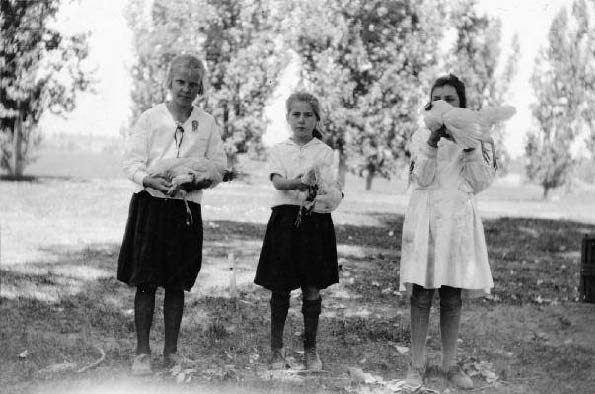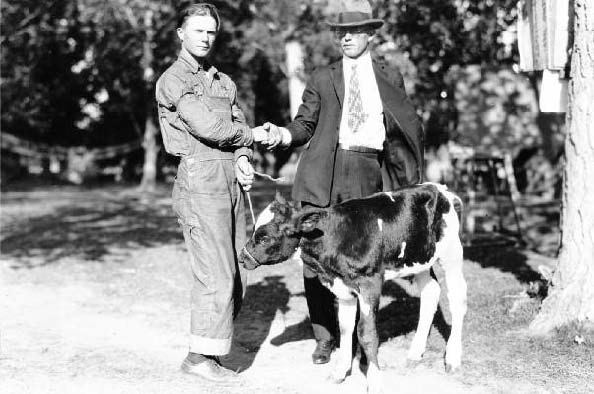edible traditions
GOLD RUSH
Exploring honey’s riches in early Nevada.
WRITTEN BY SHARON HONIG-BEAR
PHOTOS COURTESY OF UNIVERSITY OF NEVADA, RENO SPECIAL COLLECTIONS
Imagine a time when Nevada honey was so famed it was shipped off to London and to agricultural fairs around the United States. Or imagine when carloads of honey regularly were sent by train to the East Coast. In fact, you don’t need a lot of creativity, only a short history lesson that takes you to the late-1800s. Those years may have been the golden days of Nevada honey.
Three industries propelled Reno when it was established in 1868: the railroad, the discovery of gold and silver on the Comstock, and agriculture. With agriculture came bees. The first honey advertised for sale was in 1872. The newspapers carried frequent stories on beekeeping and honey, including a column called The Busy Bee.
Bees were as wild as the story of Reno in its early days. A “sweet discovery” of a honey-filled hive was found when workmen pulled down the steeple at the Methodist Church. Rufus Kinney’s house in Reno was so overrun with swarms in 1889 that it sounds like a modern horror story. A year later, a swarm settled into the orchard (imagine that!) adjacent to the Riverside Hotel. Hotelier Harry Gosse tried to capture the bees, only to be repeatedly stung, so that he eventually called on expert help.
Hyping the flavor
In the late-1800s, orange-blossom honey from Southern California set the standard for flavor, but Nevada honey producers believed they could match it for taste and purity. As early as 1876, a column in the Reno Evening Gazette noted, “There is no State in the Union better adapted to bee culture than Nevada and no county in Nevada equal to Washoe. Our immense fields of alfalfa, blossoming as they do three times a year, afford pasturage of the very best quality.” This sentiment often was repeated.
In 1901, faced with the repeated failure of the honey crop in California, J.D. Flory of California moved his operation to Mason Valley in Lyon County. There he prospered and, described as the largest apiarist in the state, was generating 80,000 pounds of comb and extracted honey. It appeared that Nevada finally had achieved respectability.

Promise of riches
In 1876, it was estimated that there were 1,000 hives in Washoe County?, generating $20 profit per hive. It was believed that someone knowledgeable about bees could make a fortune in five years.
“Honey bees are beginning to be quite profitable in Nevada, now that the soil in most of the valleys is being cultivated and field and garden flowers produced,” stated an article in 1883.
In 1892, “a Reno lady sold 7,000 pounds of honey (in a year) as the proceeds from 40 hives … as she did all the work herself … the returns were considerable.”
Other stories of riches were common. The reality of a large-scale honey business didn’t always work out. Consider Lorenzo D. Creel, who retired in 1922 after a distinguished career with the U.S. Indian Services, including a stint in Nevada. Living at 546 Mill St. in Reno, Creel set up apiaries in Lamoille and Wadsworth, with resident contractors to oversee the work. His heartbreaking story spans three years marked by bad weather, questionable employees, low prices, and lack of demand. At the end, he sadly stated in a letter, “It is very evident that we have been running a losing game from the start and I see no prospect for any improvement in the future.”
By the late-19th century, the mines in Virginia City had played out. There was a small consolation, however. Nevadans still could turn to the liquid gold of the honey bee for enjoyment, commerce, and taste.
Sharon Honig-Bear was a longtime restaurant writer for the Reno Gazette-Journal. Currently, she is a tour leader with Historic Reno Preservation Society and founder of the annual Reno Harvest of Homes Tour.
WRITTEN BY SHARON HONIG-BEAR
PHOTOS COURTESY OF UNIVERSITY OF NEVADA, RENO SPECIAL COLLECTIONS


